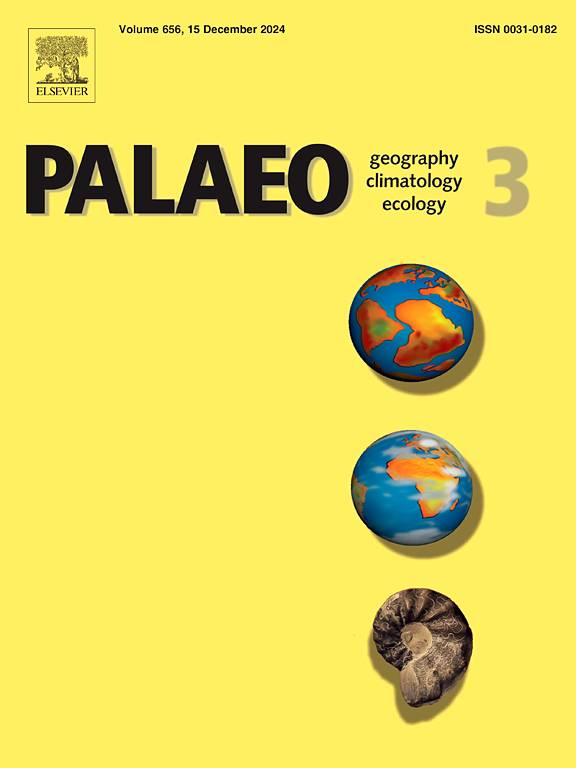Characterizing the biogeographic and taxonomic patterns of post-LOME (early Silurian) diversification of brachiopods
IF 2.7
2区 地球科学
Q2 GEOGRAPHY, PHYSICAL
Palaeogeography, Palaeoclimatology, Palaeoecology
Pub Date : 2025-06-21
DOI:10.1016/j.palaeo.2025.113105
引用次数: 0
Abstract
Brachiopods experienced rapid recovery and initial radiation during early Silurian following the Late Ordovician Mass Extinction (LOME), yet macroevolutionary processes operating during this time have remained largely unexplored. This study investigates the diversification pattern of brachiopods following the Late Ordovician Mass Extinction (LOME), focusing on the Aeronian and Telychian, Llandovery, early Silurian. Using occurrence data from three ages spanning six time intervals, we analyze temporal trends, spatial distribution, and community structure changes through bootstrapped diversity estimates, segmented regression, Non-metric Multidimensional Scaling (NMDS), and network analysis. The study reveal complex patterns in brachiopod diversification during the early Silurian. Diversity peaked in early Aeronian and remained relatively stable, with minor fluctuations in Telychian. The radiation process was characterized by significant geographic expansion and reduced provincialism. The dominant brachiopod orders were replaced in an asynchronous fashion across different paleoplates, generally trending from Ordovician-type to Silurian-type brachiopods. Importantly, diversity patterns alone inadequately captures the full scope of macroevolutionary processes. The geographic expansion of brachiopods and shifts in taxonomic dominance emerge as crucial factors in understanding post-extinction recovery patterns, highlighting the multifaceted nature of brachiopod evolution during this period.
腕足动物后lome(早志留世)多样化的生物地理和分类学特征
在晚奥陶世大灭绝(LOME)之后,腕足类动物在志留纪早期经历了快速的恢复和初始辐射,但这一时期的宏观进化过程仍未被探索。本文研究了晚奥陶世大灭绝(LOME)后腕足动物的多样化模式,重点研究了早志留世llanddovery的Aeronian和Telychian。利用6个时间区间的3个年龄段的发生数据,通过自举多样性估计、分段回归、非度量多维尺度(NMDS)和网络分析,分析了群落的时间趋势、空间分布和结构变化。该研究揭示了早志留世腕足动物多样化的复杂模式。多样性在早期Aeronian达到顶峰,并保持相对稳定,在Telychian有轻微波动。辐射过程具有显著的地域扩张和地域性降低的特点。优势腕足目在不同古板块间以不同步的方式被取代,总体趋向于奥陶系-志留系腕足目。重要的是,多样性模式本身不足以捕捉宏观进化过程的全部范围。腕足动物的地理扩展和分类学优势的变化是理解灭绝后恢复模式的关键因素,突出了这一时期腕足动物进化的多面性。
本文章由计算机程序翻译,如有差异,请以英文原文为准。
求助全文
约1分钟内获得全文
求助全文
来源期刊
CiteScore
5.90
自引率
10.00%
发文量
398
审稿时长
3.8 months
期刊介绍:
Palaeogeography, Palaeoclimatology, Palaeoecology is an international medium for the publication of high quality and multidisciplinary, original studies and comprehensive reviews in the field of palaeo-environmental geology. The journal aims at bringing together data with global implications from research in the many different disciplines involved in palaeo-environmental investigations.
By cutting across the boundaries of established sciences, it provides an interdisciplinary forum where issues of general interest can be discussed.

 求助内容:
求助内容: 应助结果提醒方式:
应助结果提醒方式:


